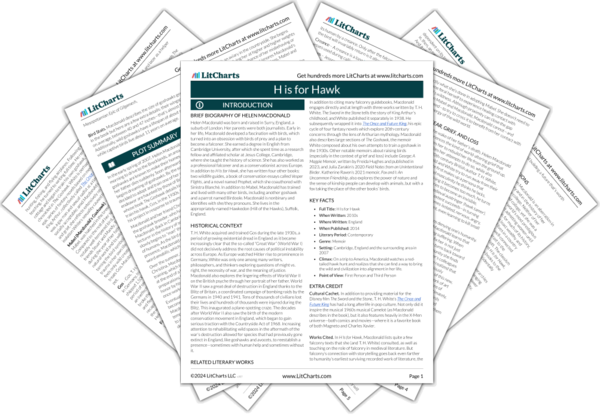Macdonald imagines White relishing his freedom—but still being incapable of fully expressing himself even in private. This suggests lingering shame and a desire to punish himself, which readers should keep in mind as they read more about his experiences with Gos in subsequent chapters. Macdonald’s dreams indicate something she doesn’t yet fully realize consciously: that she wants her bird to help her rebuild her life from the wreckage left by her father’s death—to be the prosthetic attachment that makes her feel whole again. Shepherd’s Bush is a London suburb that suffered a lot of destruction during the Blitz of Britain in WWII.
